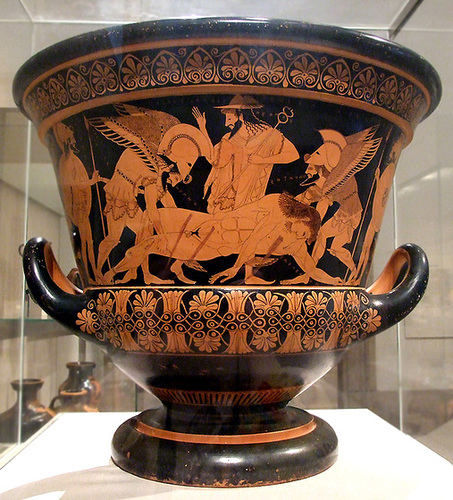

The names by which they are identified, however, are of figures from the past. The youths and their equipment are, in every respect, Athenian of the late sixth century B.C. The subject on the reverse is an arming scene.

It is notable that a story concerning an enemy of the Greeks was featured on such a large, fine vase produced by one of the leading Athenian artists. The scene on the obverse of this krater shows Hermes directing Sleep and Death as they bear Sarpedon, a son of Zeus allied with the Trojans, to his native Lycia for burial. While these poems told of the heroes and exploits of a glorious past, major elements, such as the gods and geographical locations, remained unchanged, thus imparting an ongoing reality to mythical events. The "Iliad" and the "Odyssey" of Homer were central to ancient Greek culture in many respects. In the absence of universal literacy and rapid communication, images played a major role in conveying and perpetuating important stories, traditions, and other kinds of information that assumed narrative form. The practice in antiquity of depicting scenes of profound seriousness on utilitarian objects is quite foreign to us today. Lent by the Republic of Italy (L.2006.10) Signed by Euxitheos, as potter Signed by Euphronios, as painter Terracotta calyx-krater (bowl for mixing wine and water), ca.


 0 kommentar(er)
0 kommentar(er)
